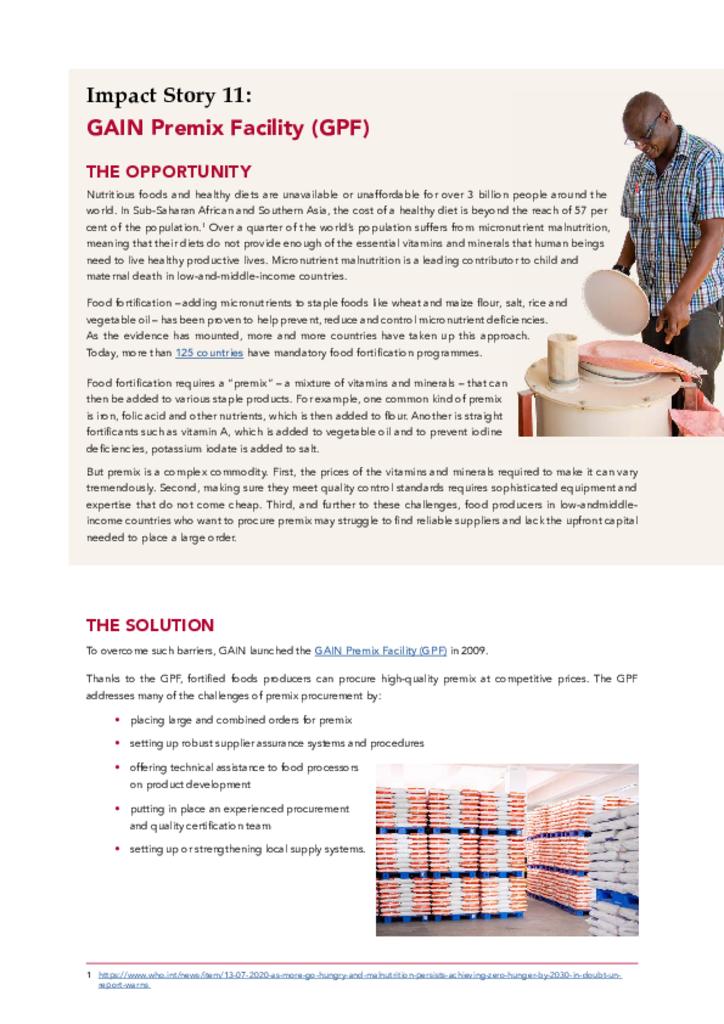Nutritious foods and healthy diets are unavailable or unaffordable for over 3 billion people around the world. In Sub-Saharan African and Southern Asia, the cost of a healthy diet is beyond the reach of 57 per cent of the population.
Over a quarter of the world’s population suffers from micronutrient malnutrition, meaning that their diets do not provide enough of the essential vitamins and minerals that human beings need to live healthy productive lives. Micronutrient malnutrition is a leading contributor to child and maternal death in low-and-middle-income countries. Food fortification – adding micronutrients to staple foods like wheat and maize flour, salt, rice and vegetable oil – has been proven to help prevent, reduce and control micronutrient deficiencies. As the evidence has mounted, more and more countries have taken up this approach.
Today, more than 125 countries have mandatory food fortification programmes. Food fortification requires a "premix" – a mixture of vitamins and minerals – that can then be added to various staple products. For example, one common kind of premix is iron, folic acid and other nutrients, which is then added to flour. Another is straight fortificants such as vitamin A, which is added to vegetable oil and to prevent iodine deficiencies, potassium iodate is added to salt. But premix is a complex commodity. First, the prices of the vitamins and minerals required to make it can vary tremendously. Second, making sure they meet quality control standards requires sophisticated equipment and expertise that do not come cheap. Third, and further to these challenges, food producers in low-andmiddleincome countries who want to procure premix may struggle to find reliable suppliers and lack the upfront capital needed to place a large order.
